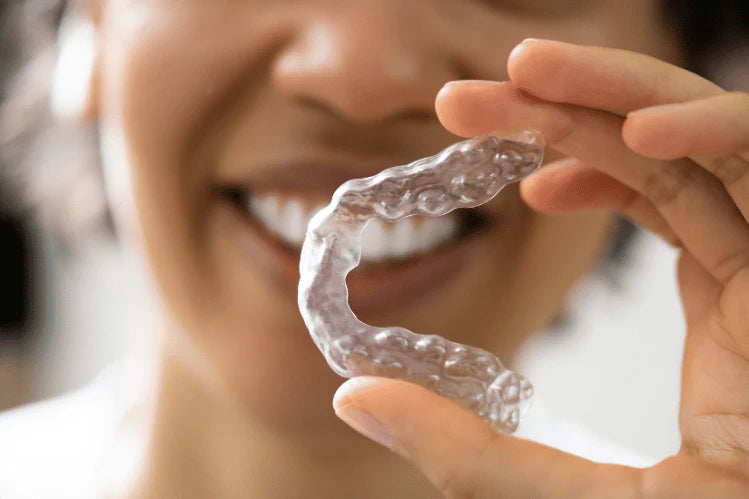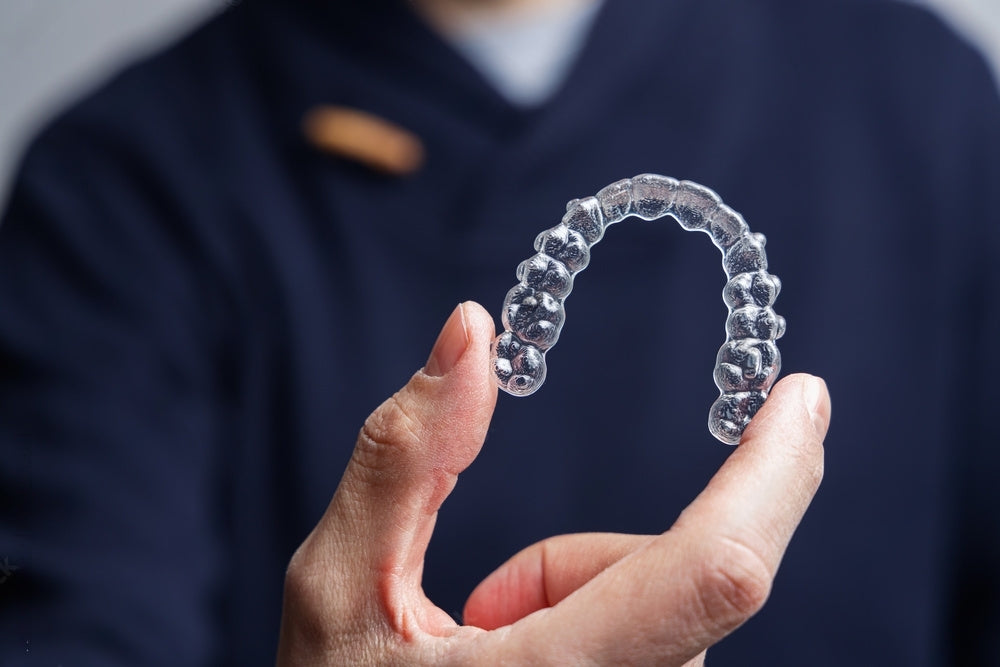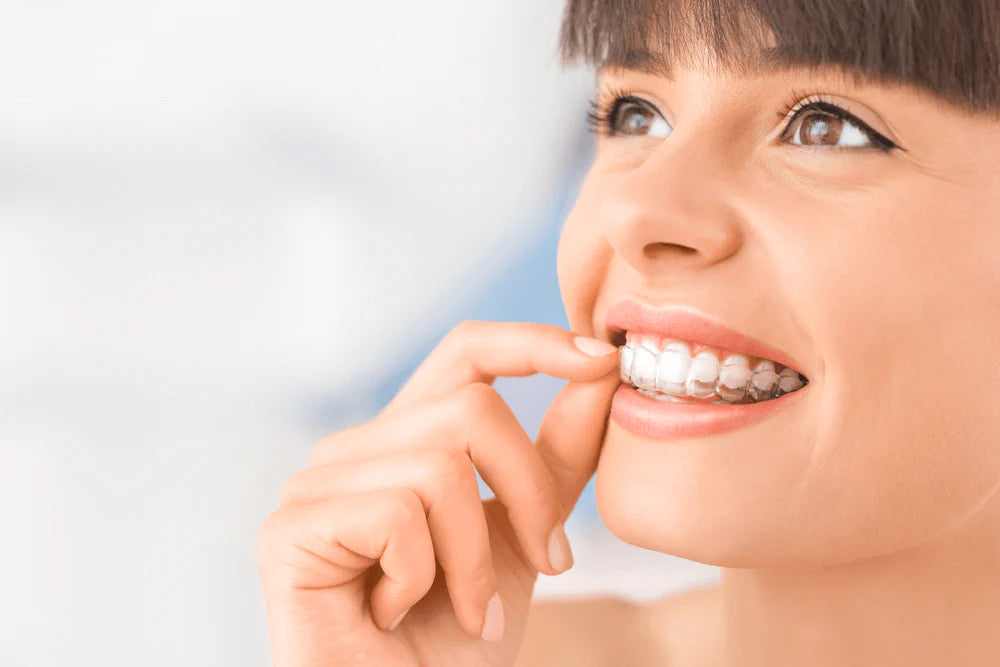Initially, it was thought that aligners could only treat a limited number of minor malocclusions but now their scope has increased. A 23-year-old female patient reported to our practice with the chief concern of palatally inclined upper centrals. Her main concern was her malaligned upper arch and “back-positioned teeth”.
She wanted to improve her smile by aligning the upper arch and enhancing her facial and dental aesthetics. She was successfully treated with OrthoPath Clear Aligners with her chief complaint resolved and improved facial and smile aesthetics. She was treated with OrthoPath Clear Aligners. Her smile improved & the severely retroclined incisors proclined. She was confident & sense of self-likeness developed.
A full orthodontic examination was carried out and records were organized for analysis including, intra-oral and extra-oral photographs, and OPG with upper and lower alginate impressions for study models. A full orthodontic examination was carried out and records were organized for analysis including intra-oral and extra-oral photographs, OPG, and lateral cephalogram with upper and lower alginate impressions for study models taken & sent for treatment planning to the OrthoPath facility.

She did not have any underlying medical disorder, neither was her periodontal health compromised, the teeth showed no mobility, and her oral hygiene was maintained. The patient was a good candidate for orthodontic treatment.

Analysis revealed retroclined upper centrals with decreased overjet. Right and left molars & canines were in class I relation. Moderate anterior crowding was present in the lower arch.
However, the patient opted for upper arch treatment only. The upper midline was centered, with the lower slightly shifted towards the left. The patients did not have any concerns about the bite and wanted anterior alignment only. Hence the case proceeded accordingly, anterior upper dentition was the main focus of the treatment planning. Once the treatment plan was approved the aligner movement record form and an IPR form were received from OrthoPath.

Treatment Objectives
As per the patient’s concern, the treatment objectives for Orthodontic treatment were:
- To improve the patient’s smile.
- Increase patient’s overjet.
- Procline the upper incisors.
- Increase the incisal visibility.
- Alignment and leveling of the upper arch to achieve the ideal arch form.
The following treatment options were discussed with the patient in detail.
- Arch alignment with conventional braces.
- OrthoPath Clear Aligners for upper arch only.
The patient being 23 years old did not like the idea of using conventional braces as it would have been socially embarrassing for her. Restorative treatment would have done nothing to reduce the overlap of her teeth. She wanted to treat the malocclusion in a hassle-free and invisible way that did not pose any social dilemma for her, therefore she chose OrthoPath Clear Aligners. An Orthodontic treatment and diagnostic form were discussed with her in detail as well as the need for Interproximal tooth reduction (IPR) to create space for teeth alignment.
Treatment Progress
IPR was performed and the patient was given the 1st aligner. For this case, 27 upper aligners were required in total. Each aligner was worn for a period of 2 weeks before moving to the next one until all aligners were used. The aligners were worn 22 hours per day and only removed while eating or cleaning teeth.
The patient was seen every 2 weeks initially till she became comfortable with the aligner treatment. A lot of emphasis was placed on keeping good oral hygiene and It was maintained and monitored. The case proceeded well and the upper arch was leveled and aligned. Ideal smile arch was achieved the customer was happy with the new smile and the case was finished after the customer’s approval.
Records were taken mid-treatment to evaluate the fit of the aligners. The customer showed good compliance & visited the dental clinic on time. Multiple factors including the accuracy of the OrthoPath clear aligners, patient cooperation & clinical coordination helped in achieving these results.
Mid Treatment Records
The aligners were well-fitted and the case tracking was fine. Mid-treatment intra-oral photographs were maintained for the record of the treatment progress. The patient showed compliance and was kept on follow-up after every stage, aligners were fitting fine and no mid-treatment ill-fitting or loss of tracking was observed. The patient did not complain of any mid-treatment problems, no gingivitis or periodontal deterioration was seen.

The aligners did not impinge on the customer at any stage. Neither was the treatment painful for her. She was happy with the mid-treatment progress of aligners. Following are a few mid-treatment photographs attached, to show the fit of the aligners.
Results & Discussion
Ideal alignment by proclining the upper central teeth was achieved, resulting in a perfect smile. Below, you'll find several attached photographs showcasing the remarkable transformation in the alignment and positioning of the teeth brought about by the aligners. This remarkable change was accomplished in approximately 10 months, utilizing about 20 upper aligners to achieve the desired results.









